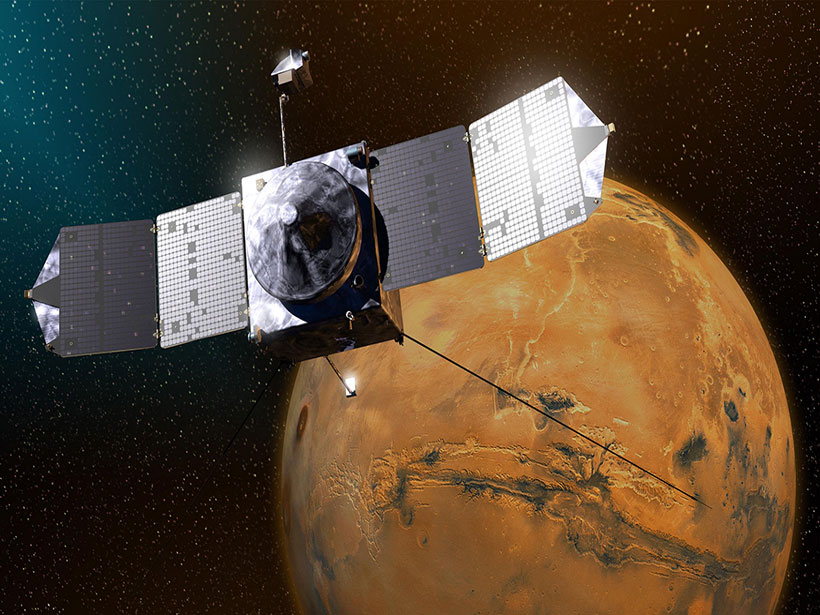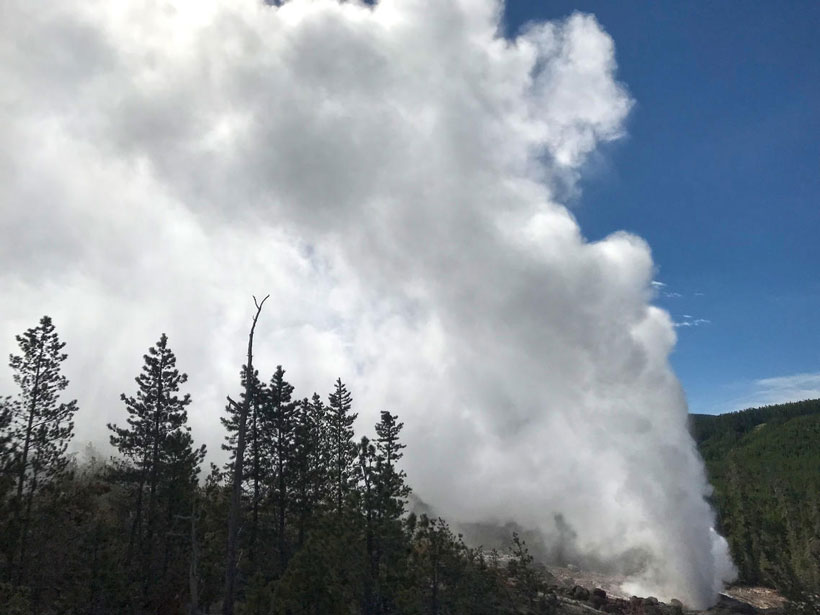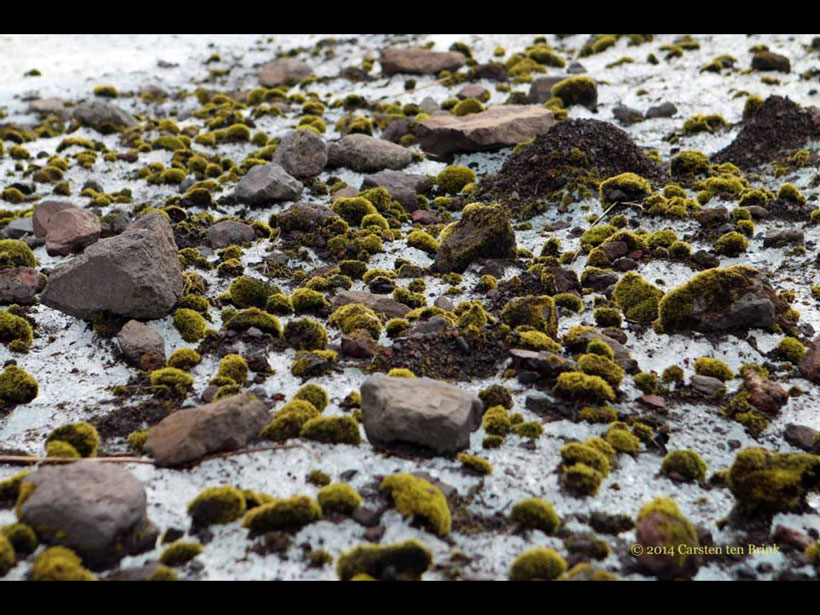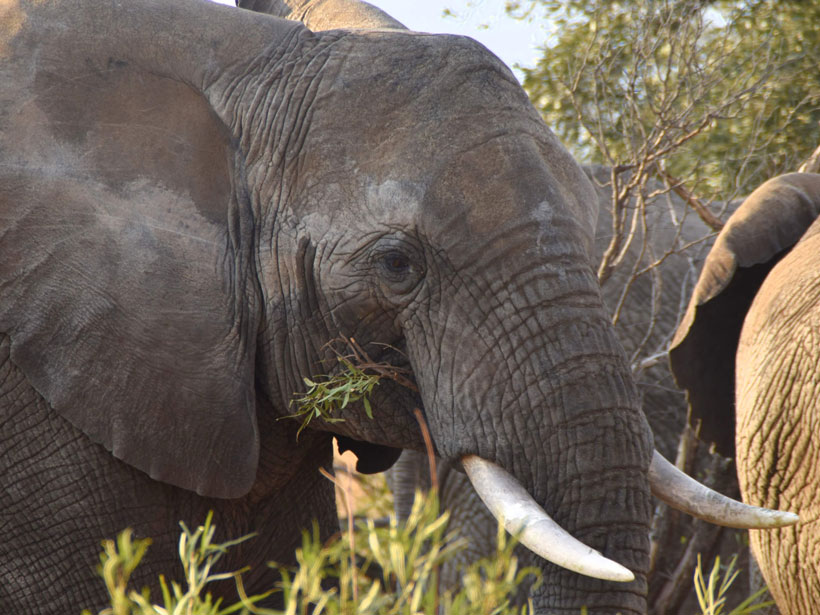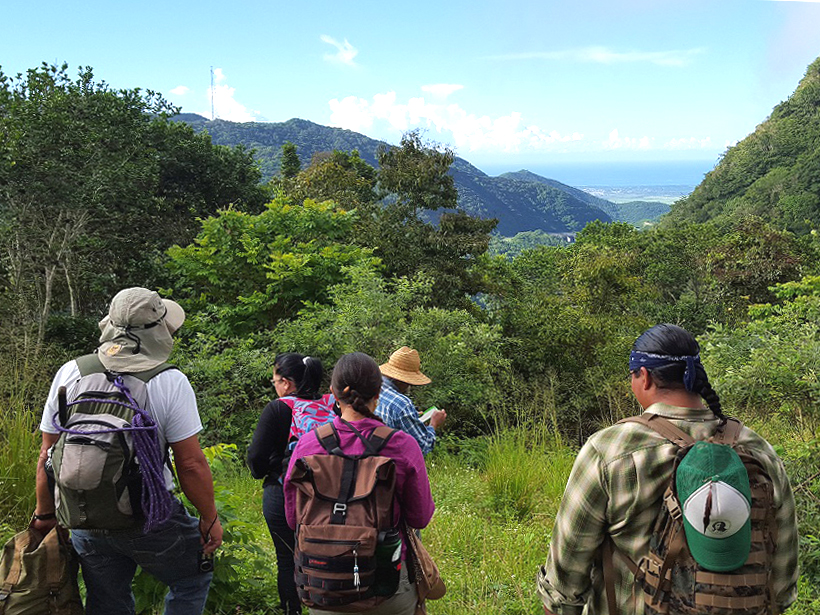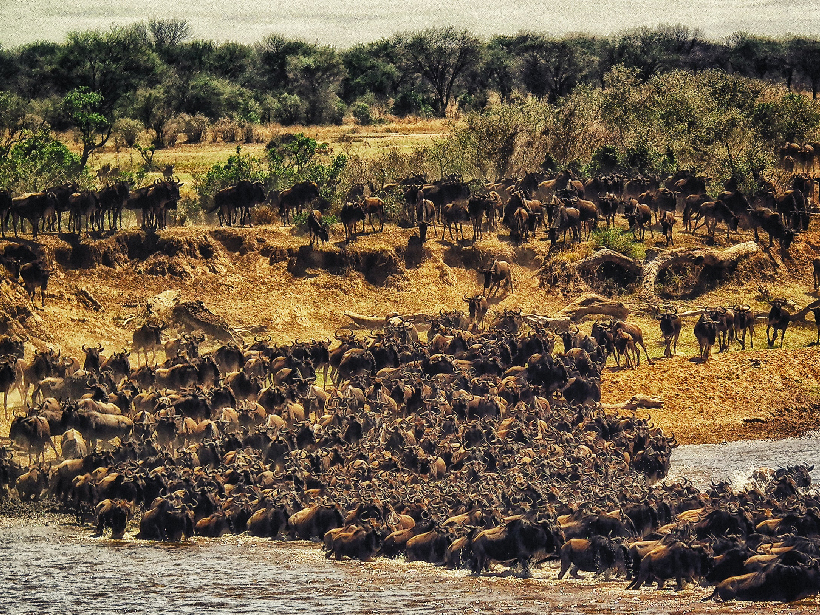New research in the field of neuromorphic computing uses tiny magnets and their magnetic fields to optimize computing algorithms.
News
The First Global Geologic Map of the Moon
At a time when more geological data about the Moon are available than ever before, USGS scientists have created a one-stop shop where everyone, including the public, can see how it all fits together.
A Longer-Lived Magnetic Field for Mars
New research indicates Mars’s dynamo may have been active for millions of years longer than previously thought.
Are Geysers a Signal of Magma Intrusion Under Yellowstone?
Steamboat Geyser, the world’s tallest, is in the midst of one of its largest periods of activity. Is it linked to new magma intruding under the Yellowstone caldera?
This Week: Glacier Mice and Melancholy Blossoms
What Earth and space science stories are we recommending this week?
Monitoring African Elephants with Raspberry Shake & Boom
A team of researchers has used low-cost devices to record footsteps and vocalizations from African elephants in the field.
Adolphe Nicolas (1936–2020)
This decorated researcher and educator made major contributions to understanding mantle processes and the creation of oceanic crust at spreading ridges, together with public outreach on climate change.
Venus Exploration Starts in the Lab
Most technology would not last a day on our planet’s evil twin. By creating Venus’s surface and atmospheric conditions here on Earth, a team of engineers is designing spacecraft technology that will last for months.
Manteniendo el Conocimiento de la Ciencia Indígena Fuera de un Molde Colonial
Un nuevo modelo de trabajo podría ayudar a los científicos a diseñar y facilitar la investigación que cumpla tanto los estándares de ética científica como los culturales, al trabajar con conocimiento indígena acerca del clima y el ambiente.
Geology and Chemistry Drive Animal Migration in the Serengeti
Fieldwork in Tanzania suggests that soil chemistry—influenced by local volcanism and tectonic activity—might help dictate the record-setting migration of over a million wildebeests.



